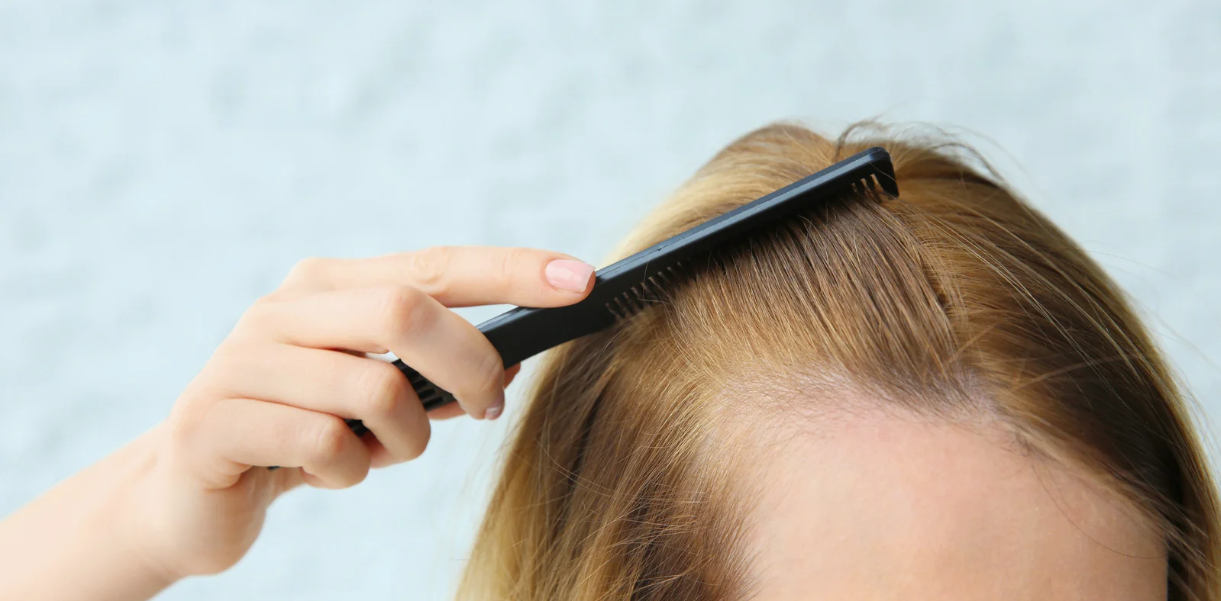From Thinning to Winning
For those unfamiliar, alopecia areata is an autoimmune skin disease that causes hair loss on the scalp, face and other parts of the body. People with alopecia areata can lose parts of their hair in patches, or in some more severe cases, they may lose all their hair. But there's Litfulo, a once-daily prescription pill that helps treat severe alopecia areata in adults and adolescents who are 12 years and older.
Worst Drinks for Hair Loss
- Sugary sodas.
- Energy drinks.
- Alcohol.
- Diet sodas.
- Coffee (excessive consumption).
- Sports drinks.
- High-caffeine drinks.
- Sweetened fruit juices.
- Milkshakes.
- Sweetened teas.
Steps Litfulo Takes to Reverse Hair Loss
In alopecia areata, the immune system mistakenly attacks the Janus kinases (JAK) pathway, an area of the immune system that’s believed to play a major role in hair loss in people with alopecia. The hair follicles are targeted, causing inflammation at the hair follicle and subsequently causing hair loss. These signals are sent from proteins deep within the immune cells. This is where Litfulo comes in.
Litfulo binds to proteins within immune cells and blocks their signaling process, leading to a decrease in the number of immune cells attacking the hair follicle.
Per a clinical study, nearly 25% of people taking Litfulo saw significant hair regrowth in just under six months.
An FDA-Approved Solution for Adolescents
Before Litfulo, there were no FDA-approved alopecia areata medicines that adolescents between the ages of 12 and 17 could use But now, thanks to Litfulo, people as young as 12 years old can use it. This will make a huge difference in the lives of children growing up and trying to live their best lives.
Unlike conventional methods that focus solely on symptom management, Litfulo targets the root cause of hair loss, offering a more sustainable solution. This is why many people are turning to Litfulo.
Cost
If you’re eligible, you can pay as little as $0 for Litfulo. Check out Litfulo’s website to learn how you can sign up for the Copay Savings Card to start saving today.
Side Effects
Like most medicines, Litfulo has side effects to be aware of. The most common ones include headache; diarrhea; acne; rash; hives; inflamed hair pores (folliculitis); fever; eczema; dizziness; shingles; decreased red blood cell counts; and mouth sores, redness and swelling of the lining of your mouth. Other serious but less common side effects include:
Infections
Since it affects your immune system, Litfulo has the potential to lower the effectiveness of your immune system, making infection more likely. Serious infections such as tuberculosis (TB) and infections caused by bacteria, fungi or viruses, are also possible.
Blood Clots
Blood clots in the veins of your legs (deep vein thrombosis, DVT), lungs (pulmonary embolism, PE) or eyes can happen in some people taking Litfulo.
Allergic Reactions
The most common signs of an allergy to Litfulo include hives, rash, trouble breathing
feeling faint or dizzy or swelling of your lips, tongue or throat.
There is an increased risk of death in people 50 years and older who have at least one heart disease (cardiovascular) risk factor and are taking a Janus kinase (JAK) inhibitor.
Speak to Your Doctor
Before taking Litfulo, make sure you speak to your doctor. They can help you figure out if Litfulo is best for your specific hair loss needs.
Different Types of Hair Loss
Did you know that there are many different kinds of alopecia and hair loss?
Androgenetic Alopecia
Affecting more than 50 million men and 30 million women in the United States, the most common type of hair loss is androgenetic alopecia. It’s also known as male pattern hair loss or female pattern hair loss.
Telogen Effluvium
Telogen effluvium occurs when large numbers of follicles on the scalp enter the resting phase of the hair growth cycle but the next growth phase doesn’t begin.
Cicatricial Alopecia
Cicatricial alopecia, also known as scarring alopecia, is quite rare. It occurs when inflammation destroys hair follicles and causes scar tissue to form in their place. After scar tissue forms, hair doesn’t regrow.
Article Resources
- Alopecia Areata | National Alopecia Areata Foundation
- Alopecia Areata | National Institute of Arthritis and Musculoskeletal and Skin Diseases
- The FDA Just Approved a New Alopecia Drug for Hair Loss. Here’s Why It’s So Promising | SELF
- European Commission Approves Pfizer’s LITFULO™ for Adolescents and Adults With Severe Alopecia Areata | Pfizer
